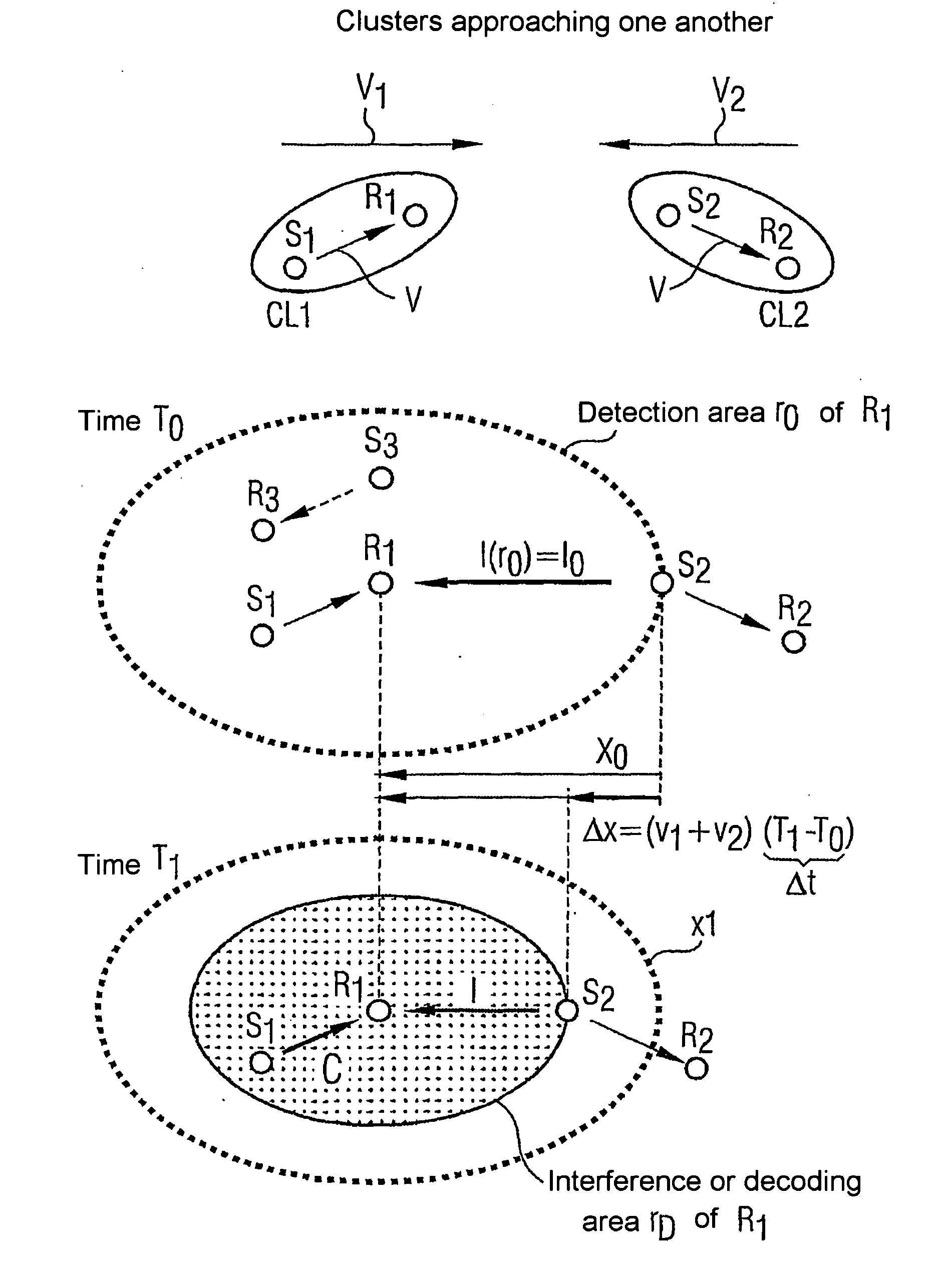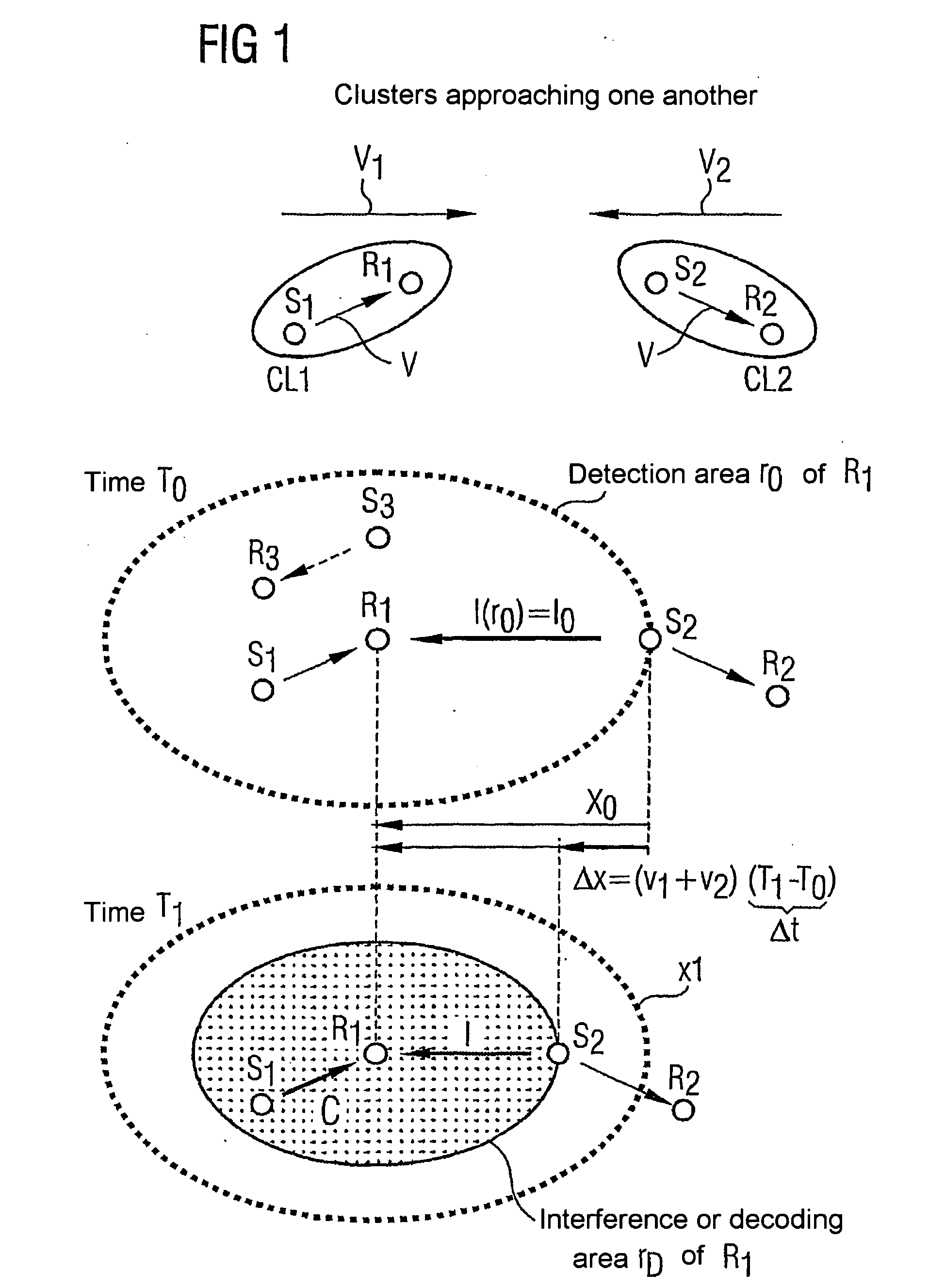Method and station for transmitting data in a radio communication system
- Summary
- Abstract
- Description
- Claims
- Application Information
AI Technical Summary
Benefits of technology
Problems solved by technology
Method used
Image
Examples
Embodiment Construction
[0030] Reference will now be made in detail to the preferred embodiments of the present invention, examples of which are illustrated in the accompanying drawings, wherein like reference numerals refer to like elements throughout.
[0031] As can be seen from FIG. 1, clusters CL1, CL2—each made up of stations S1, R1, S3, R3 or S2, R2 communicating with each other via radio interfaces V—develop into so-called ad hoc radio networks as an example of a radio communication system. To simplify the following description, one station at a time S1 or S2 of the first or second cluster CL1, CL2 is regarded as the transmitting station S1 or S2 and a further station R1, R2 of the first or second cluster CL1, CL2 is regarded as the receiving station R1, R2. Of course, it is also possible and standard to transmit in the opposite direction. In the transmission illustrated, it is assumed that data with signaling and / or information content is transmitted by the respective transmitting station S1, S2 to ...
PUM
 Login to View More
Login to View More Abstract
Description
Claims
Application Information
 Login to View More
Login to View More - Generate Ideas
- Intellectual Property
- Life Sciences
- Materials
- Tech Scout
- Unparalleled Data Quality
- Higher Quality Content
- 60% Fewer Hallucinations
Browse by: Latest US Patents, China's latest patents, Technical Efficacy Thesaurus, Application Domain, Technology Topic, Popular Technical Reports.
© 2025 PatSnap. All rights reserved.Legal|Privacy policy|Modern Slavery Act Transparency Statement|Sitemap|About US| Contact US: help@patsnap.com



